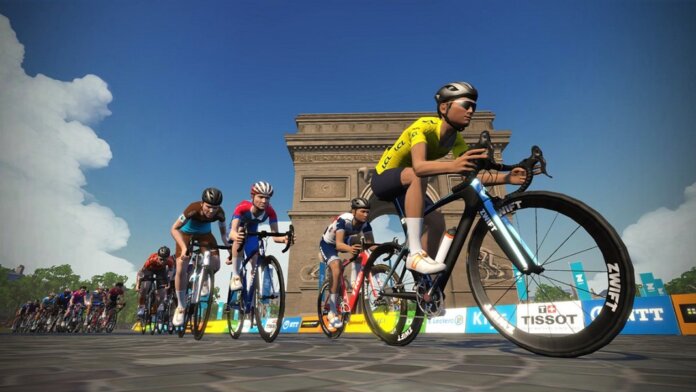The coronavirus pandemic has changed the way we do things, big-time. The events, places, and activities we were used to enjoying have been canceled, closed, or in some cases, permanently shut down. Virtual versions of just about everything have sprung up: meetings, concerts, parties, classes, conventions. This week another event was added to the list of things gone virtual: the Tour de France.
First held in 1903, the Tour de France has gone on every year since, with the only exceptions being during the first and second World Wars. As of right now, the in-the-flesh tour is still scheduled to take place, though it’s been pushed back to an August 29 start date (it usually takes place in July).
With all the smaller cycling races that usually go on during the summer having been canceled, the virtual Tour will give cyclists some motivation to train, and a chance to see how they stack up against their competitors (whose training routines have no doubt been equally disrupted over the last few months). Participants will be on stationary bikes in their homes rather than real bikes on the road, and there are some other key differences between the virtual Tour and the real thing.
For starters, the Tour is normally broken down into 21 parts, or “stages,” each classified as flat, hilly, or mountain. Cyclists have 23 consecutive days to complete all the stages, with the total distance spanning a whopping 3,500 kilometers (2,200 miles), about the distance from San Francisco to Chicago.
The virtual Tour will look a little different (or, let’s be honest—a lot different. About as different as possible while still being called a bike race). Rather than consecutive days, the race will happen over three weekends in July, with six stages lasting one to two hours apiece. As in real life, each stage will tend toward being mostly hilly, mountain, or flat (meaning participants will need to be adjusting the resistance on their trainer bikes and sometimes standing or crouching to simulate climbing a hill; if you’ve ever done a spin class, you know how it works).
The race will be conducted on a virtual platform called Zwift. Zwift isn’t brand-new—it’s been around for a few years—and it markets itself as a training app for cyclists, runners, and triathletes. Athletes use a treadmill or stationary bike in combination with an array of sensors plus their laptop or smartphone. They can access customized training programs and join virtual races against other users all over the world.
Ideally, competitors in the virtual Tour will have a big screen in front of them simulating their ride through virtual environments, some of which Zwift created especially for this event. For the first two days of the race, riders will bike through Watopia, a virtual world created by Zwift. But the company also rushed to build new, custom worlds for the Tour, mainly mimicking the real-life locations where the race usually takes place, including the French countryside, a 6,263-foot peak in Provence called Mont Ventoux, and the finish line on the famous Champs-Elysées in Paris.
In one cycling coach’s opinion, riding on Zwift can actually feel more physically challenging than being out on a real bike, for three reasons: it’s harder for your body to cool off, the bike’s resistance works differently, and “your motivation dwindles due to not having the wind in your hair and the road moving underneath you.”
That last point is key. The pandemic has played out very differently than it would have just 10 years ago; technologies like Zoom and Slack allowed millions of people to work from home, our smartphones helped us stay ultra-connected even when physically apart, and quick access to information kept us informed of what was going on.
Of course, talking to our friends or watching musicians stream on a screen will never be a good-enough substitute for doing these things in person, just as riding a stationary bike through a virtual world will never give you that wind-in-your-hair, road-beneath-your-feet feeling.
But in a time when we have no choice but to appreciate the small things, it’s better than the alternative, which is… nothing. Alas, depending how the pandemic continues to play out, we may be in for a highly virtualized future, with events we never would’ve thought could go virtual finding a way to do just that.
23 men’s teams and 17 women’s teams have registered for the virtual bike race, including the last three winners of the real-life event. “Footage” will be broadcast in more than 130 countries.
Let’s just hope all the contestants have stable internet connections.
Image Credit: Zwift



